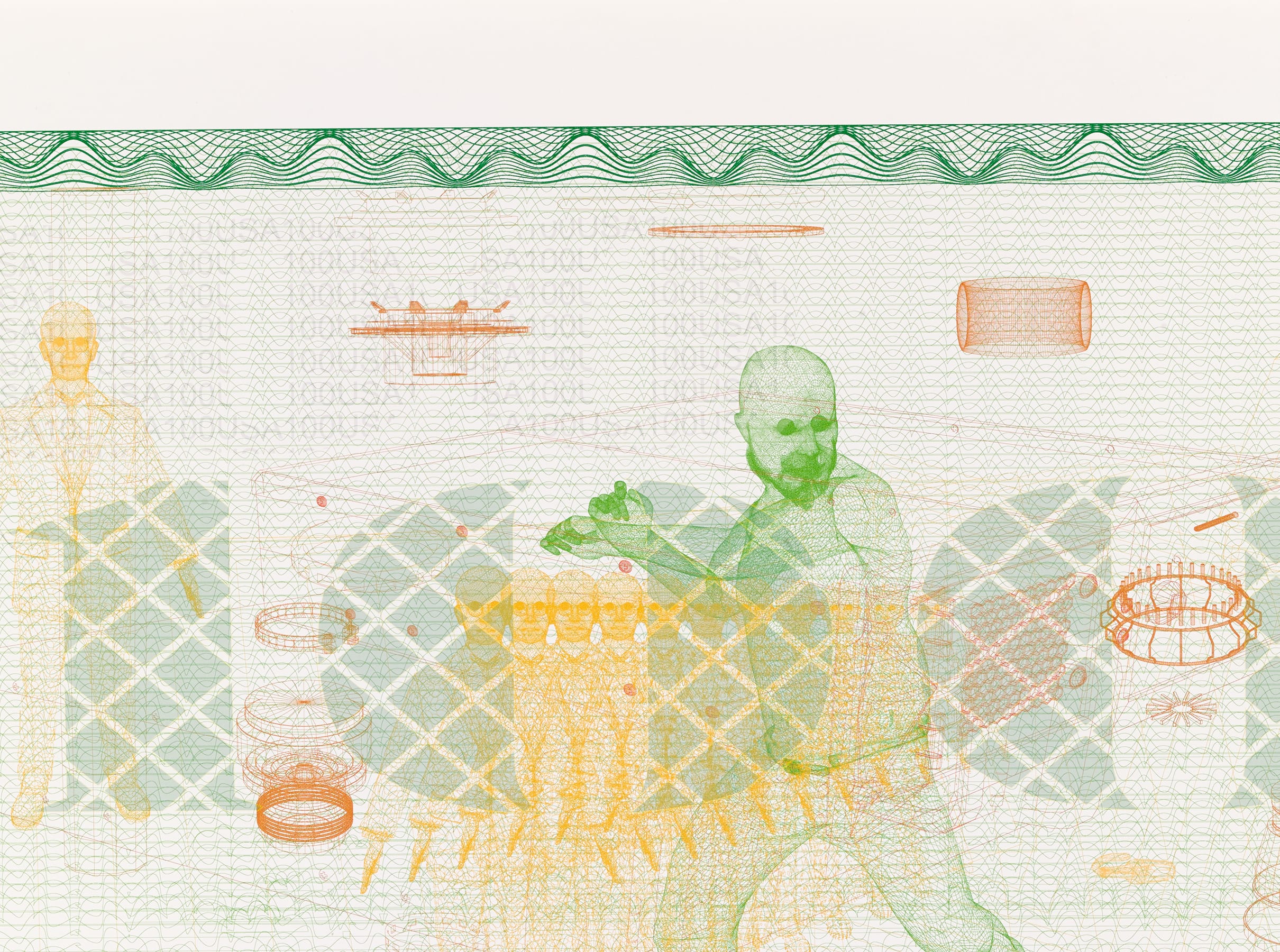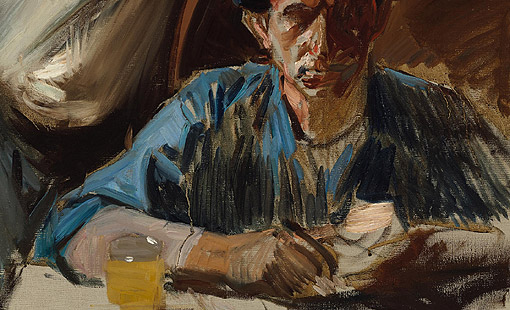
Sorolla, much more than just the 'painter of light'
As the creator of an unmistakable style of his own that blended influences from the Golden Age of Spanish painting - especially Velázquez - with key trends at the cutting edge of pictorial art in his time, Joaquín Sorolla y Bastida (b. Valencia, 1863 - d. Cercedilla, Madrid, 1923) is a key figure in the history of Spanish art. To mark the centenary of his death and the 160th anniversary of his birth, 2023 has been declared 'Sorolla Year'. This is an exceptional opportunity to (re)discover the oeuvre of this prolific, influential artist who painted over 220 pictures, some of which have earned a place in the popular imagination.
As our contribution to the tributes being organised in commemoration of Sorolla, we present a look at the works by him in the Banco de España Collection. There are four pieces in all, covering some of the main genres in which he worked over the course of his career, from portraits to decorative painting, from urban landscapes to his most intimate, brightly-lit costumbrista works, highlighting his eclecticism (which often goes unnoticed) and his undoubted mastery. That mastery earned him wide international recognition during his lifetime: major solo exhibitions of his work were staged in Paris, Berlin, London, New York, St Louis and Chicago.
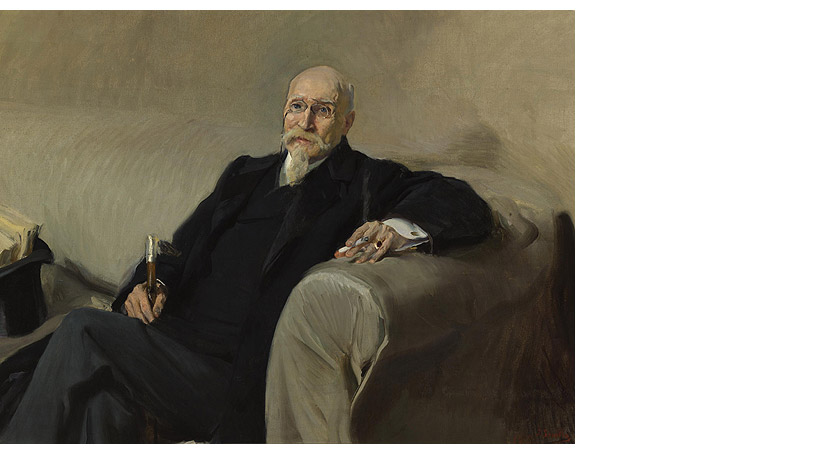 Joaquín Sorolla y Bastida: Portrait of José Echegaray (1905)
Joaquín Sorolla y Bastida: Portrait of José Echegaray (1905)
The first work by Sorolla that the Banco de España acquired was Portrait of José Echegaray (1905), which he painted under a commission from the Madrid Casino when Echegaray was awarded the Nobel Prize for Literature. Mónica Rodríguez Subirana writes that Sorolla laid out the early stages of the portrait directly from life, at various sessions with the sitter in which he sought to stress his sitter’s work as a writer. This was not the only thing for which Echegaray was known; he was an eminent scientist, and also served as Minister for Infrastructure and for Finance. This is hinted at in the books shown in the upturned top hat on the left of the picture.
This portrait was one of the works shown at Sorolla's major solo exhibition at the Galerie Georges Petit in Paris in 1906. Although he is not best known as a portrait artist, he actually produced numerous portraits, especially in the last 20 years of his career. Curiously, on one of his working trips to the USA he was commissioned to paint William Howard Taft, the 27th President. Rodríguez Subirana says that it is in the USA that his finest work as a portrait artist can be found: at the ‘gallery of illustrious Spaniards’ that he produced for Archer Milton Huntington, now held at the Hispanic Society of America. His work as a portrait artist is the theme of one of the first exhibitions opened to mark Sorolla Year: Retratos de Joaquín Sorolla (1863-1923) en el Museo del Prado ['Portraits by Joaquín Sorolla (1863-1923) at the Museo del Prado']![]() .
.
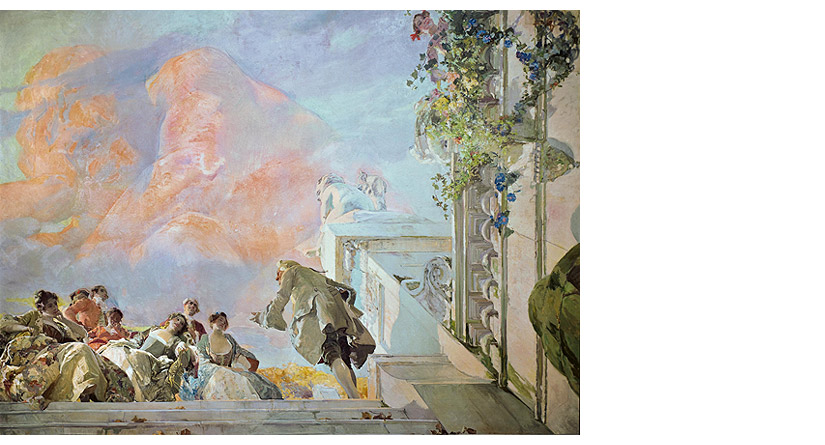 Joaquín Sorolla y Bastida: Voltaire Telling One of his Stories (1905)
Joaquín Sorolla y Bastida: Voltaire Telling One of his Stories (1905)
The second work by Sorolla in the Collection also dates from 1905. Voltaire Telling One of his Stories is the centrepiece of the decorative paintings that he produced for the ceilings of the home of civil engineer Calixto Sánchez, with whom he maintained a long-lasting friendship. Sánchez came to own at least 10 works by Sorolla. There is little information to explain why he chose this subject matter, which is unusual in his oeuvre, but just a year before he produced a painting on a similar theme entitled Apollo Driving the Chariot of the Sun![]() for the ceiling of the Madrid palazzo of the Marchioness of Torrelaguna. Mónica Rodríguez Subirana believes that in the work for Calixto Sánchez's home, Sorolla seeks to represent Voltaire telling his short story Plato's Dream, because a phantasmagorical shape in the clouds in the sky shows "the figure of a naked man with his head in his hands, as if thinking or sleeping". The story in question appears in a book by Voltaire that Sorolla had in his library, which is conserved by the Sorolla Museum
for the ceiling of the Madrid palazzo of the Marchioness of Torrelaguna. Mónica Rodríguez Subirana believes that in the work for Calixto Sánchez's home, Sorolla seeks to represent Voltaire telling his short story Plato's Dream, because a phantasmagorical shape in the clouds in the sky shows "the figure of a naked man with his head in his hands, as if thinking or sleeping". The story in question appears in a book by Voltaire that Sorolla had in his library, which is conserved by the Sorolla Museum![]() , where much of his legacy is held and a broad range of exhibitions and activities centred on the artist and his work is scheduled for this year.
, where much of his legacy is held and a broad range of exhibitions and activities centred on the artist and his work is scheduled for this year.
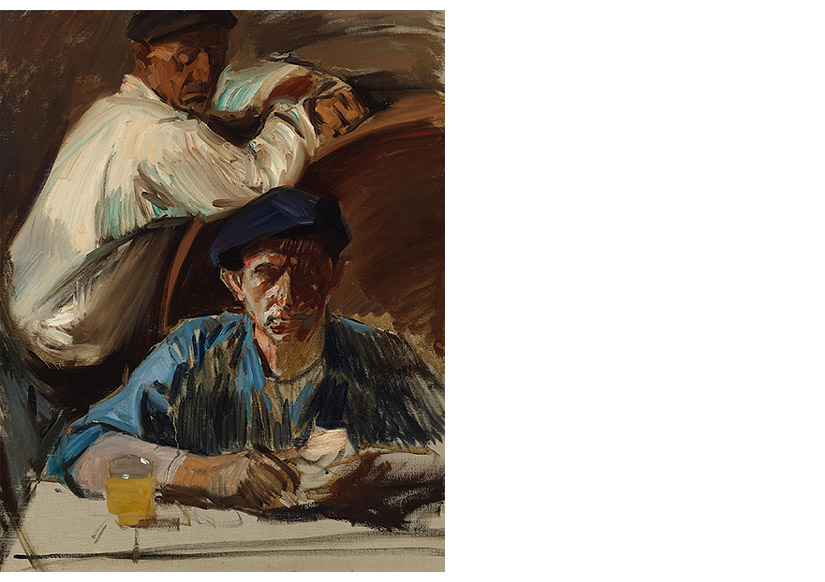 Joaquín Sorolla y Bastida: In a Tavern in Zarautz (1910)
Joaquín Sorolla y Bastida: In a Tavern in Zarautz (1910)
The other two paintings by Sorolla in the Banco de España Collection —In a Tavern in Zarautz and The Old Door of Seville Cathedral— date from 1910, a year in which he produced numerous new works for the second round of exhibitions of his art in the USA. The first is one of many paintings that Sorolla produced during his summers on the coast of Gipuzkoa, where he was able to paint beach scenes with a light that was very different from that of his native Valencia. The pictures in question are a mix of summer scenes showing the high society of the time —Under the Awning. On the Beach at Zarautz![]() , On the Sand. Zarautz Beach
, On the Sand. Zarautz Beach![]() — and paintings of humble folk going about their day-to-day activities. This latter group includes In a Tavern in Zarautz, which is reminiscent of earlier canvases such as The Old Man with the Cigarette
— and paintings of humble folk going about their day-to-day activities. This latter group includes In a Tavern in Zarautz, which is reminiscent of earlier canvases such as The Old Man with the Cigarette![]() (1899) and Peppers (1903). He depicts everyday common folk enjoying moments of leisure and rest, in intimate scenes that work almost as portraits not just of the people but also of their customs. In the summer of 1910 in Zarautz he was particularly prolific in his paintings of such ordinary folk, though his work in this field peaked with Vision of Spain
(1899) and Peppers (1903). He depicts everyday common folk enjoying moments of leisure and rest, in intimate scenes that work almost as portraits not just of the people but also of their customs. In the summer of 1910 in Zarautz he was particularly prolific in his paintings of such ordinary folk, though his work in this field peaked with Vision of Spain![]() , a set of 14 large panels painted between 1912 and 1919 to decorate the library of the Hispanic Society of America in New York. They show different regions of Spain in scenes that reflect their typical traditions and activities.
, a set of 14 large panels painted between 1912 and 1919 to decorate the library of the Hispanic Society of America in New York. They show different regions of Spain in scenes that reflect their typical traditions and activities.
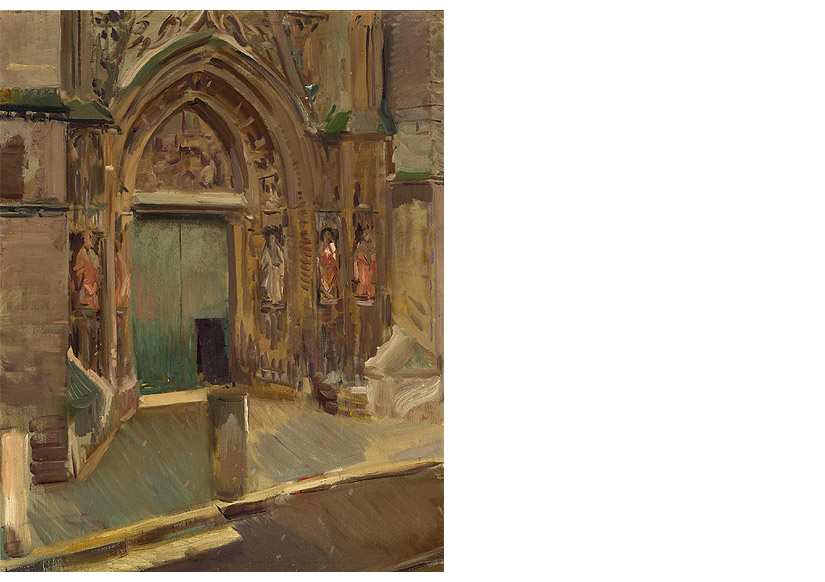 Joaquín Sorolla y Bastida: The Old Door of Seville Cathedral (1910)
Joaquín Sorolla y Bastida: The Old Door of Seville Cathedral (1910)
The fourth and final Sorolla painting in the Collection is The Old Door of Seville Cathedral, which he painted during a brief time spent in Seville and elsewhere in Andalusia early in 1910. Until recently this painting was catalogued as Door of Burgos Cathedral, but advances in the study of Sorolla's works in recent years have confirmed that the correct name is the one by which it is now known. The door shown is the so-called "Door of the Nativity" at Seville Cathedral, also known as the Door of St Michael because it stands opposite the former school named after the saint. On the tympanum of this door is a scene showing the birth of Jesus, and on the jambs are sculpted figures of the four Evangelists, of St. Hermenegild and of St Lauren. This painting was shown at the exhibitions staged at the Art Institute of Chicago and the City Art Museum of St Louis, and may be considered a forerunner of the views of Burgos cathedral that Sorolla painted in March and April 1910 (which probably contributed to the confusion as to its subject matter).
